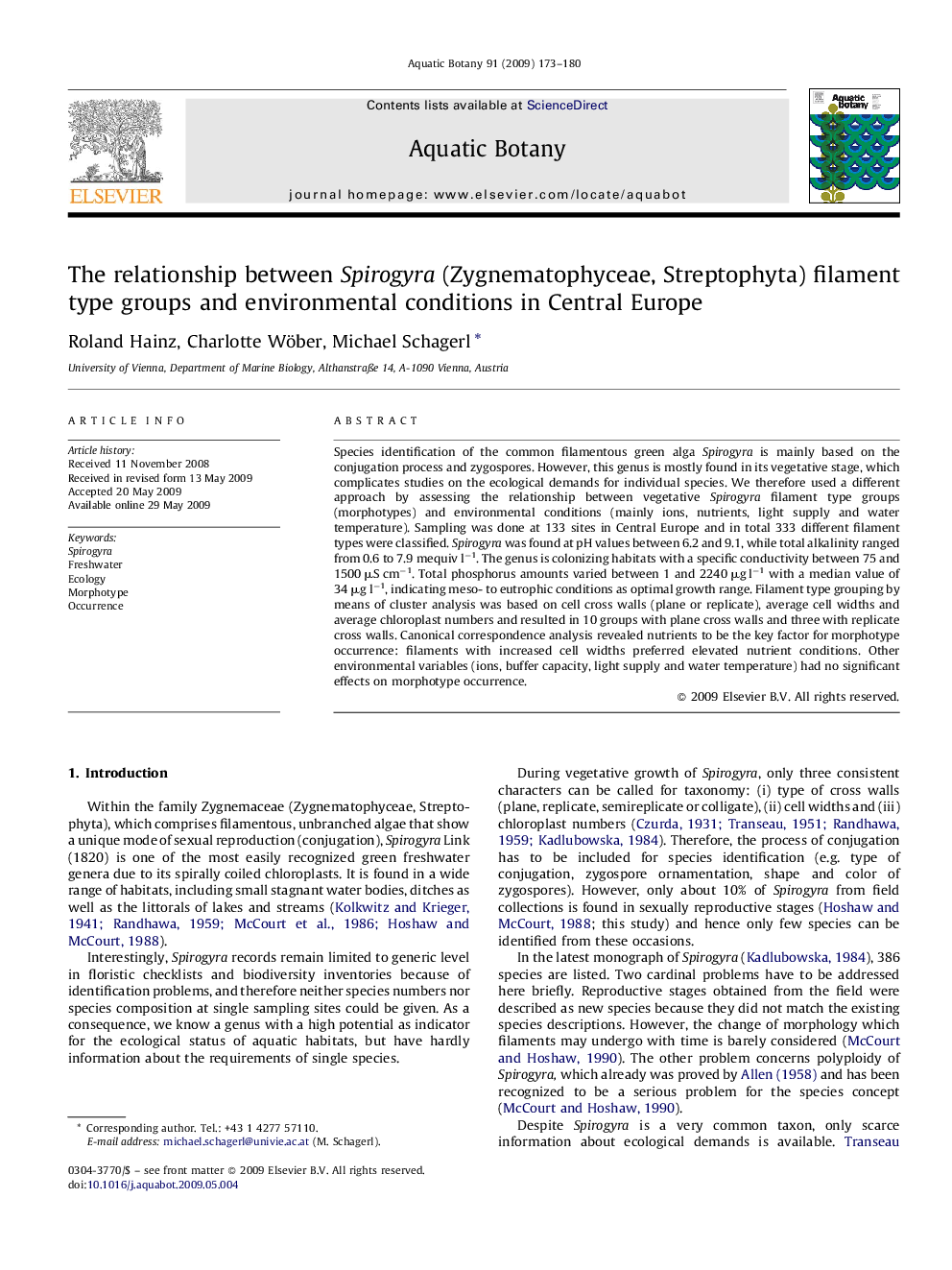| Article ID | Journal | Published Year | Pages | File Type |
|---|---|---|---|---|
| 4528264 | Aquatic Botany | 2009 | 8 Pages |
Abstract
Species identification of the common filamentous green alga Spirogyra is mainly based on the conjugation process and zygospores. However, this genus is mostly found in its vegetative stage, which complicates studies on the ecological demands for individual species. We therefore used a different approach by assessing the relationship between vegetative Spirogyra filament type groups (morphotypes) and environmental conditions (mainly ions, nutrients, light supply and water temperature). Sampling was done at 133 sites in Central Europe and in total 333 different filament types were classified. Spirogyra was found at pH values between 6.2 and 9.1, while total alkalinity ranged from 0.6 to 7.9 mequiv lâ1. The genus is colonizing habitats with a specific conductivity between 75 and 1500 μS cmâ1. Total phosphorus amounts varied between 1 and 2240 μg lâ1 with a median value of 34 μg lâ1, indicating meso- to eutrophic conditions as optimal growth range. Filament type grouping by means of cluster analysis was based on cell cross walls (plane or replicate), average cell widths and average chloroplast numbers and resulted in 10 groups with plane cross walls and three with replicate cross walls. Canonical correspondence analysis revealed nutrients to be the key factor for morphotype occurrence: filaments with increased cell widths preferred elevated nutrient conditions. Other environmental variables (ions, buffer capacity, light supply and water temperature) had no significant effects on morphotype occurrence.
Related Topics
Life Sciences
Agricultural and Biological Sciences
Aquatic Science
Authors
Roland Hainz, Charlotte Wöber, Michael Schagerl,
